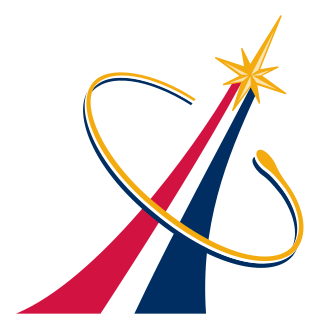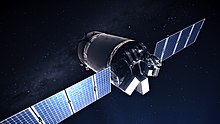Human spaceflight programs have been conducted, started, or planned by multiple countries and companies. Until the 21st century, human spaceflight programs were sponsored exclusively by governments, through either the military or civilian space agencies. With the launch of the privately funded SpaceShipOne in 2004, a new category of human spaceflight programs – commercial human spaceflight – arrived. By the end of 2022, three countries and one private company (SpaceX) had successfully launched humans to Earth orbit, and two private companies had launched humans on a suborbital trajectory.

Private spaceflight refers to spaceflight activities undertaken by non-governmental entities, such as corporations, individuals, or non-profit organizations. This contrasts with public spaceflight, which is traditionally conducted by government agencies like NASA, ESA, or JAXA.

Space Exploration Technologies Corp. commonly referred to as SpaceX, is an American spacecraft manufacturer, launch service provider, defense contractor and satellite communications company headquartered in Hawthorne, California. The company was founded in 2002 by Elon Musk with the goal of reducing space transportation costs and ultimately developing a sustainable colony on Mars. The company currently operates the Falcon 9 and Falcon Heavy rockets along with the Dragon and Starship spacecraft.

Cygnus is an expendable American cargo spacecraft developed by Orbital Sciences Corporation but manufactured and launched by Northrop Grumman Space Systems as part of NASA's Commercial Resupply Services (CRS) program. It is usually launched by Northrop Grumman's Antares rocket from the Wallops Flight Facility, although three flights were on ULA's Atlas V and three are planned for SpaceX's Falcon 9, in both cases launching from Cape Canaveral Space Force Station. It transports supplies to the International Space Station (ISS) following the retirement of the American Space Shuttle. Since August 2000, ISS resupply missions have been regularly flown by the Russian Progress spacecraft, as well as by the European Automated Transfer Vehicle, and the Japanese H-II Transfer Vehicle. With the Cygnus spacecraft and the SpaceX Dragon, NASA seeks to increase its partnerships with domestic commercial aviation and aeronautics industry.

Falcon Heavy is a partially reusable super heavy-lift launch vehicle that can carry cargo into Earth orbit, and beyond. It is designed, manufactured and launched by American aerospace company SpaceX.

The SpaceX Red Dragon was a 2011–2017 concept for using an uncrewed modified SpaceX Dragon 2 for low-cost Mars lander missions to be launched using Falcon Heavy rockets.

A number of different spacecraft have been used to carry cargo to and from space stations.

SpaceX CRS-2, also known as SpX-2, was the fourth flight for SpaceX's uncrewed Dragon cargo spacecraft, the fifth and final flight for the company's two-stage Falcon 9 v1.0 launch vehicle, and the second SpaceX operational mission contracted to NASA under a Commercial Resupply Services (CRS-1) contract.

SpaceX has stated its ambition to facilitate the colonization of Mars via the development of the Starship launch vehicle. The company states that this is necessary for the long-term survival of the human species.

Dragon 2 is a class of partially reusable spacecraft developed and manufactured by American aerospace manufacturer SpaceX, primarily for flights to the International Space Station (ISS). SpaceX also launches private missions, such as Inspiration4 and Axiom Space Missions. There are two variants of the Dragon spacecraft: Crew Dragon, a spacecraft capable of ferrying four crewmembers, and Cargo Dragon, a replacement for the original Dragon 1 used to carry freight to and from space. The spacecraft consists of a reusable space capsule and an expendable trunk module. The spacecraft launches atop a Falcon 9 Block 5 rocket and the capsule returns to Earth through splashdown.

SpaceX CRS-13, also known as SpX-13, was a Commercial Resupply Service mission to the International Space Station launched on 15 December 2017. The mission was contracted by NASA and is flown by SpaceX. It was the second mission to successfully reuse a Dragon capsule, previously flown on CRS-6. The first stage of the Falcon 9 Full Thrust rocket was the previously flown, "flight-proven" core from CRS-11. The first stage returned to land at Cape Canaveral's Landing Zone 1 after separation of the first and second stage.

Dragon, also known as Dragon 1 or Cargo Dragon, was a class of fourteen partially reusable cargo spacecraft developed by SpaceX, an American private space transportation company. The spacecraft flew 23 missions between 2010 and 2020. Dragon was launched into orbit by the company's Falcon 9 launch vehicle to resupply the International Space Station (ISS).
The future of space exploration involves both telescopic exploration and the physical exploration of space by robotic spacecraft and human spaceflight.

The Artemis program is a Moon exploration program that is led by the United States' NASA and was formally established in 2017 via Space Policy Directive 1. The Artemis program is intended to reestablish a human presence on the Moon for the first time since Apollo 17 in 1972. The program's stated long-term goal is to establish a permanent base on the Moon to facilitate human missions to Mars.

SpaceX CRS-21, also known as SpX-21, was a Commercial Resupply Service mission to the International Space Station which launched on 6 December 2020. The mission was contracted by NASA and was flown by SpaceX using a Cargo Dragon 2. This was the first flight for SpaceX under NASA's CRS Phase 2 contract awarded in January 2016. This was also the first Cargo Dragon of the new Dragon 2 variant, as well as the first Cargo Dragon flight that was docked at the same time as a Crew Dragon spacecraft. This mission used Booster B1058.4, becoming the first NASA mission to reuse a booster previously used on a non-NASA mission. This was also first time SpaceX launched a NASA payload on a booster with more than one previous flight.

The Gateway Logistics Services will be a series of uncrewed spaceflights to the Lunar Gateway space station, with the purpose of providing logistical services to the Gateway. Overseen by NASA's Gateway Logistics Element, the flights will be operated by commercial providers, contracted by the agency in support of crewed expeditions to the Gateway made under the Artemis program. As of March 2023, SpaceX is the only company contracted to provide the services.

The Commercial Crew Program (CCP) provides commercially operated crew transportation service to and from the International Space Station (ISS) under contract to NASA, conducting crew rotations between the expeditions of the International Space Station program. American space manufacturer SpaceX began providing service in 2020, using the Crew Dragon spacecraft, and NASA plans to add Boeing when its Boeing Starliner spacecraft becomes operational no earlier than 2025. NASA has contracted for six operational missions from Boeing and fourteen from SpaceX, ensuring sufficient support for ISS through 2030.

Crew Dragon Endeavour is a Crew Dragon space capsule manufactured and operated by SpaceX and used by NASA's Commercial Crew Program. As of 2023 it has successfully completed four crewed missions to the International Space Station (ISS). It was first launched into orbit atop a Falcon 9 rocket on 30 May 2020 and successfully docked to the International Space Station (ISS) as part of the Crew Dragon Demo-2 mission. This was the first crewed flight test of a Dragon capsule, carrying Doug Hurley and Bob Behnken on first crewed orbital spaceflight from the United States since STS-135 in July 2011 and the first crewed orbital spaceflight by a private company. On 2 August 2020 it returned to Earth. The spacecraft was named by Hurley and Behnken after the Space ShuttleEndeavour, aboard which they first flew into space during the STS-127 and STS-123 missions, respectively. The name Endeavour is also shared by the command module of Apollo 15. The spacecraft's second mission, Crew-2, ended 8 November 2021 after having spent almost 200 days in orbit. Crew Dragon Endeavour set the record for the longest spaceflight by a U.S. crew vehicle previously set by her sibling Crew Dragon Resilience on 2 May 2021. Collectively, Endeavour has spent over 450 days in orbit the most time so far by a crewed spacecraft, surpassing Space Shuttle Discovery.





















